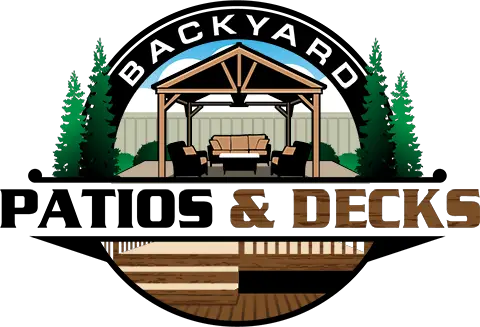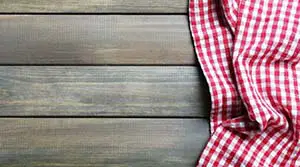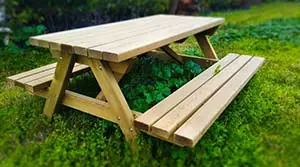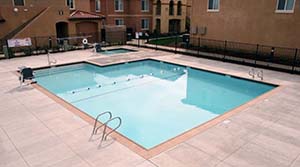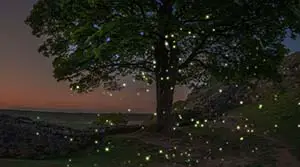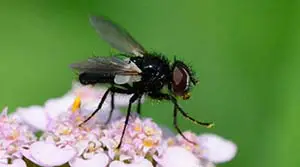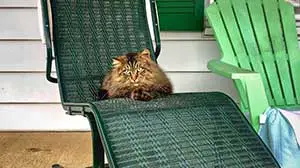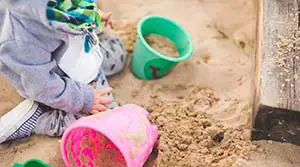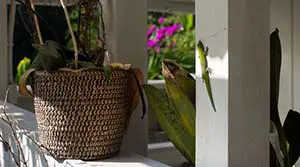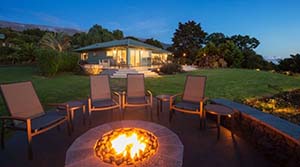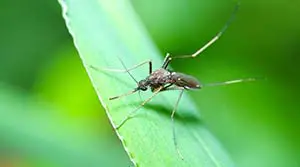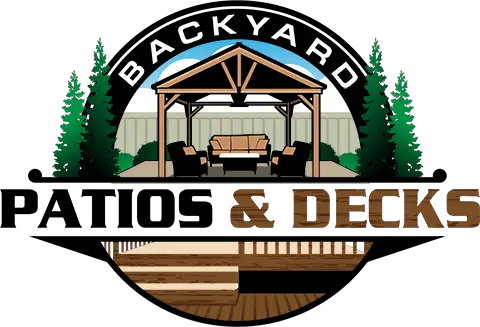
Birds improve your landscape’s overall appearance and feel through their beauty, chirping, and pollination activities. But you probably do not want them nesting on your porch.
When birds become an issue on your porch, you need to get rid of them. You can do that by denying them food, destroying their nests, and housing them somewhere else.
Here are different approaches to repel birds from nesting on your porch:
- Clear the nests and clean up everything
- Eliminate food sources close to the porch
- Eliminate water sources close to your porch
- Remove vegetation that serves as attraction
- Eliminate debris that provides nesting materials
- Block the birds’ access to your porch
- Use visual and audio bird deterrents
- Get an outdoor cat
- Change your outdoor color scheme
- Call in the professionals
It is also worth considering that birds can pose a danger to your health and property. This article educates you on the risks of having birds much closer to home and the easy ways you can keep them from nesting on your porch.
5 Dangers Birds Pose
There is nothing wrong with keeping birds as pets so long as you ensure that you take them to the vet regularly. However, some birds nesting on your porch are likely wild and not entirely under your control.
As a result, they pose a danger to human and pet health. But others are likely to come from your birdhouses, where they may not be comfortable for some reason.
Below are some of the issues you may deal with if you have birds hanging around on your porch.
1. Bird Nests Are Unappealing to Look At
One disadvantage of birds building nests on your porch is that it affects your home’s overall appearance. That, in turn, affects your home’s curb appeal, thus reducing the overall value of your home. That is because bird nests on your porch can look incredibly unappealing.
In addition, birds nesting around your porch are likely to leave their droppings everywhere. Every time you sit down on your patio to enjoy the outdoors, the stinky smell and sight of the messiness on your porch and even on the floors will be pretty distracting.
2. Birds Carry Many Diseases
Birds are responsible for carrying many diseases that can substantially negatively impact your health or the health of your pets.
Examples of diseases that birds can carry include Cryptococcosis and Histoplasmosis, which are fungal infections that pass through bird droppings. It tends to affect those with compromised immune systems.
You can also contract Salmonellosis and E.coli. Both of these diseases pass through bird droppings, contaminating food and water supplies.
It is worth noting that it is not only bird droppings that transmit many of these bird-related diseases. You may also get infections when you contact contaminated soil, water, food, and porch surfaces.
Also, you may get infected through bites from insects that first bit the infected birds. St. Louis encephalitis is an example of such a disease. It transmits by mosquitoes that feed on infected birds.
3. Birds Can Attack You
Most birds tend to mind their own business even as they make their home on your porch. But that is not the case with birds that have young ones to protect.
Recent research shows that bird attacks on humans have been increasing over the past few years. Most of these attacks happen because of the increased human-bird interactions that make the female birds feel defensive about their chicks and eggs.
The ideal solution concerning such birds is to remove yourself from the areas where their nests are. But that is impossible when the nest happens to be on your porch. So, it would be best if you found other ways of dealing with the problem.
4. Property Damage
In addition to attacks, diseases, and messiness, birds can damage your property significantly. It could end up being a costly affair for you, mainly if fires occur.
Sometimes, the only exterior walls you may have to vent your dryer would be those forming your porch. While you may find ways to hide them out of sight, if the birds get to them, you will be in a lot of trouble.
Bird nests are a considerable risk since dryer fires tend to be ignited by something dry. They are usually dry enough to act as excellent tinder. All you need is a bit of hit or spark, and your entire home could be gone in less than a day.
You should also know that bird droppings tend to be acidic, which means they can eat through many materials, such as your roof, masonry, and any metal features on your porch and around your property.
So, your walls, air conditioning systems, paint, insulation, and siding could all get damaged over time if birds make their home on your porch.
The destruction of some of these components of your home may lead to additional water damage. In the end, you will be the one to pay thousands of dollars to fix these things.
5. You May Anger the Homeowners’ Association
If your homeowners’ association (HOA) frowns upon having birds on your property, you could be in serious trouble.
If birds keep nesting on your porch, you would have contravened the association’s rules and regulations. Not only will you anger the members of the association, but you may find yourself with many more problems.
While they may not remove you from your home, an HOA could fine you for any actions bringing birds into common areas. So, you may find yourself having to dig deep into your pocket to cover those costs.
Also, your neighbors may end up having a bad relationship with you because of the birds on your porch. If they haven’t signed up to have bird droppings damaging their stuff, you will get all the blame since the birds in question will be nesting on your porch.
10 Ways to Get Rid of Birds from Your Porch
Thankfully, you can get rid of birds from your porch. However, consider whether you still want the birds within your yard before determining the best course of action for your needs.
Below are some of the easy ways to keep birds from nesting on your porch.
1. Clear the Nests & Clean Up Everything
The moment you realize birds nesting on your porch, don’t wait until the birds create an entire generation. Get rid of the nest as soon as possible.
But first, you must ensure the nest is not active, which means it should not have any eggs or brooding adult birds.
Once you determine the nest is inactive, you can then remove it. But doing so requires that you wear protective gear such as long-sleeved clothing, a respiratory mask, and gloves.
After that, you can spray an antibacterial spray on the nest and wait for it to dry before removing the nest and putting it in a trash bag before throwing it away.
Once you finish removing the nest, wash up everything you used. Also, clean up your entire porch and deodorize all the surfaces.
The thorough cleanup eliminates the scent trail so that the birds previously on your porch do not follow it back to where their old nests were.
The last thing you want is the birds to come back and make a new home.
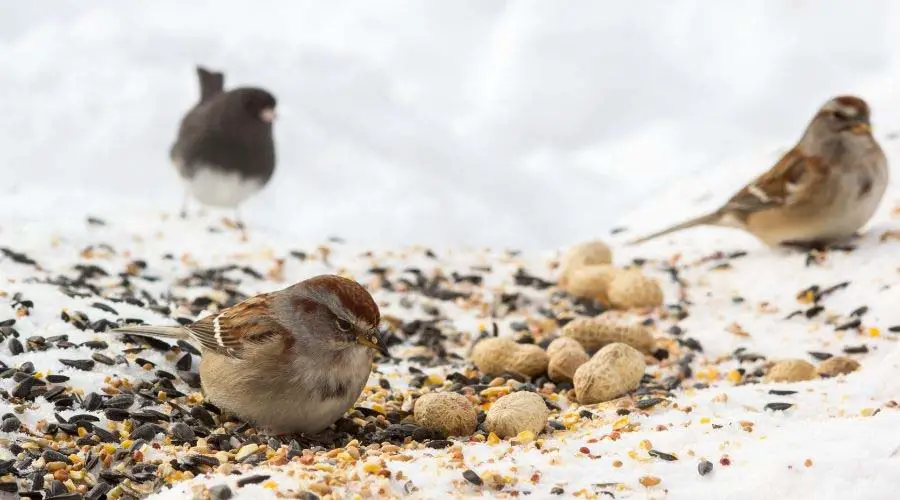
2. Eliminate Food Sources Close to the Porch
Birds tend to nest close to food. These food sources include:
- Insects
- Flowers (mostly nectar)
- Grasses
- Seeds
- Pet food
- Fish
- Human food leftovers
- Other birds
- Lizards
- Rodents
So, you need to get rid of any bird food sources located within the porch area.
For starters, you need to stop leaving food out for the birds. That includes your leftovers and any bird food you choose to buy to feed them. It would also help to stop leaving pet food outside when your pets finished eating.
You may also want to seal any cracks on your walls and floors by caulking to ensure animals like lizards and rodents do not make their home on your property and serve as ready food sources for birds on your porch. But first, ensure these animals are out.
Compost heaps are also excellent food sources for birds. They tend to contain slugs, snails, and worms. So, if you have such heaps close to your porch, consider buying compost bins with tight lids.
In addition, you should secure your vegetables and other flowering plants by installing a bird-proof mesh, especially if the garden is close to your porch.
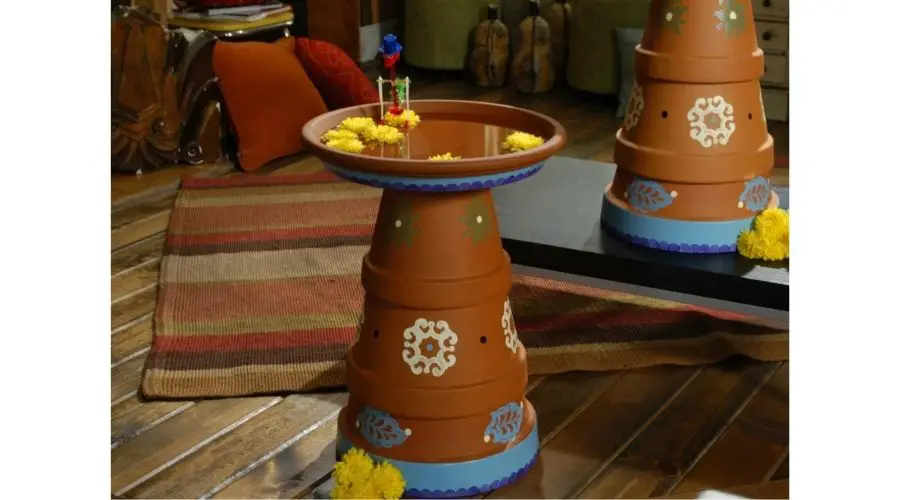
3. Eliminate Water Sources Close to Your Porch
Birds usually use water for bathing, drinking, cooling off, and food sources. For that reason, if you deny them water, they will be forced to look for it elsewhere.
If you have a clogged gutter system, you may want to start there when eliminating water sources for the birds on your porch. So, you could use a plumber’s snake to unclog any blocks within the downspouts or drain pipes.
Also, it would help if you cleaned the debris from the gutters to prevent standing water that will attract birds closer to your home.
If there are birdbaths on your property, you should remove and repurpose them, relocate them farther away from the porch, or cover them for a while.
Also, if you like to leave your pet’s water bowl outside or on the porch, it would be wise for you to stop doing so.
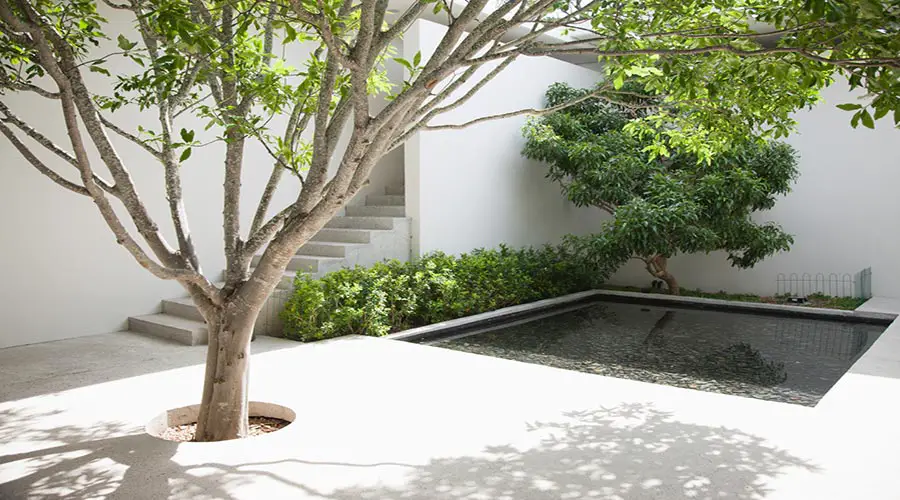
4. Remove Vegetation that Serves as Attraction
The more vegetation you have close to your home, the more likely birds will start nesting on your porch. That is because it provides them with the cover they need to perch and hide if they feel tired or threatened.
For that reason, you should cut down trees near your porch or prune them significantly. If there are bird feeders on those trees, relocate them.
However, fruit trees can be quite a challenge because they offer a food source for the birds. If you do not want to cut them, install bird-proof netting over the fruit trees. That will prevent them from accessing the trees and force them to look elsewhere for food and a place to roost.
It would also help to relocate your flower garden away from the porch. Flowers provide nectar, which birds use as a food source.
5. Eliminate Debris that Provides Nesting Materials
The reality is that birds are pretty creative when building their homes because they can use just about anything. That includes twigs, leaves, mud, pine leaves, and feathers.
So, it is incredibly challenging for you to eliminate all the debris they can use to make their nests. But that doesn’t mean you shouldn’t try.
First, remove debris on your gutters since it provides many nesting materials birds could use. Second, when you prune your vegetation or mow your lawn, ensure you do not leave the debris behind.
You can either enclose it in trash bags or compost it in a closed composting bin. And if you choose to use it as mulch, apply it on vegetation that is farther away from your porch.
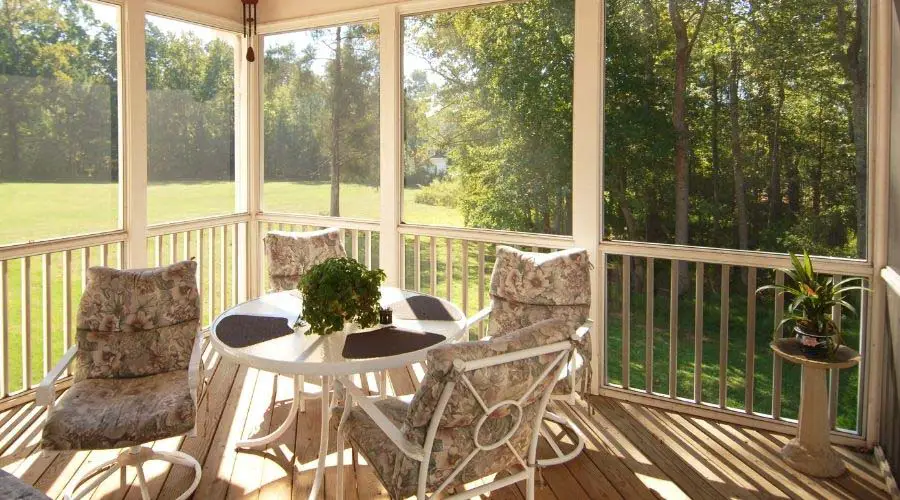
6. Block the Birds’ Access to Your Porch
To keep birds from nesting on your porch, consider blocking access to it from as many angles as possible. Granted, it may compromise some aspects of your porch’s overall appearance, but the space will remain bird-free, which is what matters most.
One effective way to prevent birds from accessing your outdoor space is to screen your entire porch. But you must ensure the screen fabric is bird-proof so that even the smallest of birds on your property does not get in.
It would also help if you installed bird guards over your dryer vents. These guards could be in the form of fine wire meshing or a commercial cover product. What matters is that they enable proper air and moisture flow while keeping the birds out.
Where there are unwanted openings, consider covering them up. But if installing a cap or guard of some kind is impossible, you need to make landing impossible for the birds.
In such cases, apply a bird-repellant gel or liquid on porch surfaces, exposed rafters, light fixtures, and eaves. Such products tend to be sticky and make it uncomfortable for birds to roost. So, they end up flying away from the spots on which the gel is applied.
Bird spikes are also an excellent alternative. You can attach these spikes on various surfaces where birds are likely to land, such as the newel posts, light fixtures, and handrails.
Then these birds will find it difficult to perch and move around your porch surfaces. They are unlikely to nest on your porch if they cannot land comfortably.
Other deterrents include grid wire systems, spring wire systems, bird baits, traps, and bird slides products.
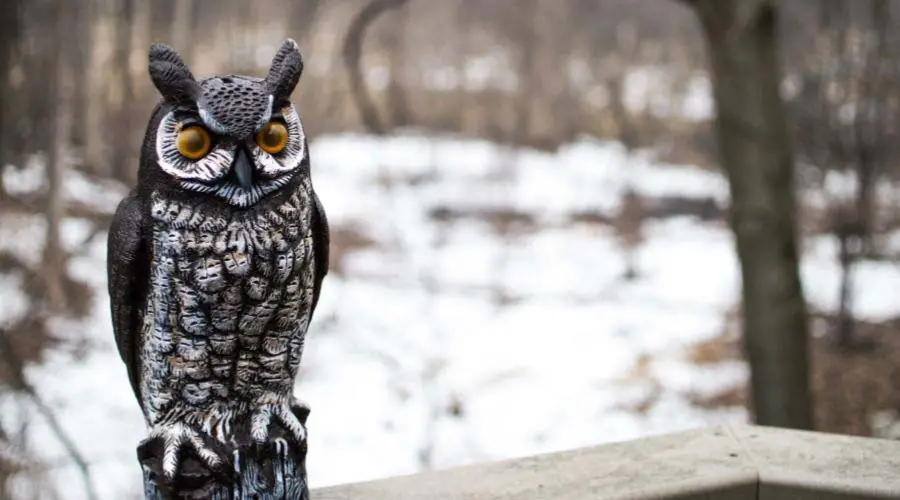
7. Use Visual & Audio Bird Deterrents
Birds tend to see specific things and get scared. In addition, some noises irritate them and make them uncomfortable. So, you can use some of these items as visual and audio deterrents to keep them off your porch.
For example, when you place holographic or reflective scare tapes and aluminum foils on a surface, they reflect light and scare the birds away. So, you can use them on your porch to keep birds from nesting there.
Installing multiple wind chimes on your porch rafters or light fixtures may also work. When they move about, they prevent access to nesting areas.
But the sounds they make also help startle and scare the birds away from the porch. However, once the birds get used to the sounds, they may begin encroaching on your porch again without fear.
Using predator decoy and scarecrow products that resemble bird predators may also scare birds away. But you are likely to have better results if the decoys move around or make distressing noises around your porch and the area around it.
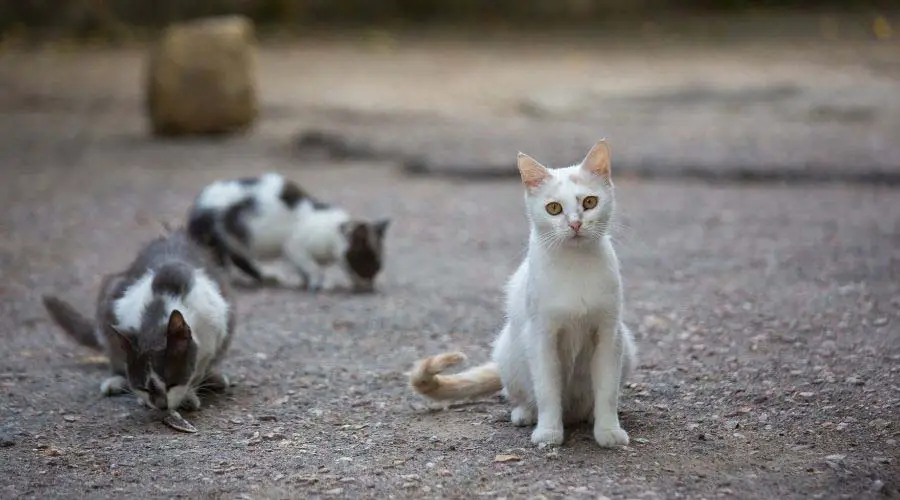
8. Get an Outdoor Cat
Get an outdoor cat if you have a severe issue with birds nesting on your porch and taking over. Generally, these two kinds of animals do not mix well.
Cats are excellent climbers with good night vision, so they can access the higher areas of your porch and scare the birds away.
Also, they hunt and eat birds if the opportunity presents itself. Any birds hanging around will view your pet as a predator and relocate for those reasons.
However, if you oppose letting your cats eat birds, you can supervise the hunt, so birds do not get eaten so long as they move away.
It may be tricky, though, because you cannot keep track of an outdoor cat all the time. However, its mere presence when you are around on the porch may be enough to keep the birds away forever.
9. Change Your Outdoor Color Scheme
Birds find various colors fascinating. As a result, if you have these colors on your porch or the area around it, such as in a flower garden, you will likely attract flying visitors. So, you may want to change your outdoor color scheme.
However, before changing your color scheme, learn what kind of birds you are dealing with. That is because different colors appeal to specific birds, so your goal is to use colors that are unattractive to the birds that frequent your property.
For example, most birds find blues, greens, and purples attractive. And so is the silver color. So, having porch features or garden flowers with these colors will likely attract more birds.
However, if you have siskins nesting on your porch, you need to get rid of the reds. And if you have robins, you shouldn’t have black anywhere near your patio.
You could always use the colors that birds favor to redirect the birds from your porch. You could buy birdfeeders and birdhouses or paint them in those colors in such situations.
10. Call in the Professionals
Many states have strict laws concerning birds and how you can handle them when they are on your property. Most birds have some federal or state protection. The only exceptions are starlings, pigeons, and English sparrows.
Therefore, removing nests, adult birds, and eggs could be problematic, especially if you do not have a permit. That is where professional bird removal experts come in.
Professional bird removal service providers are more familiar with local and federal laws and regulations governing birds.
Therefore, they have permits and will use the correct methods to get rid of nesting birds from your porch while keeping you out of legal trouble. They also have the experience to help you implement strategies to keep birds away from your home after that.
Final Thoughts
Having birds on your property is good because they can help eliminate other pests like slugs, improve the outdoor ambiance, and improve pollination.
However, it would be best if you kept them out of your porch or home. If you learn practical and humane ways of doing that, you can enjoy the patio and let the birds enjoy the rest of your outdoor space comfortably.
Sources
